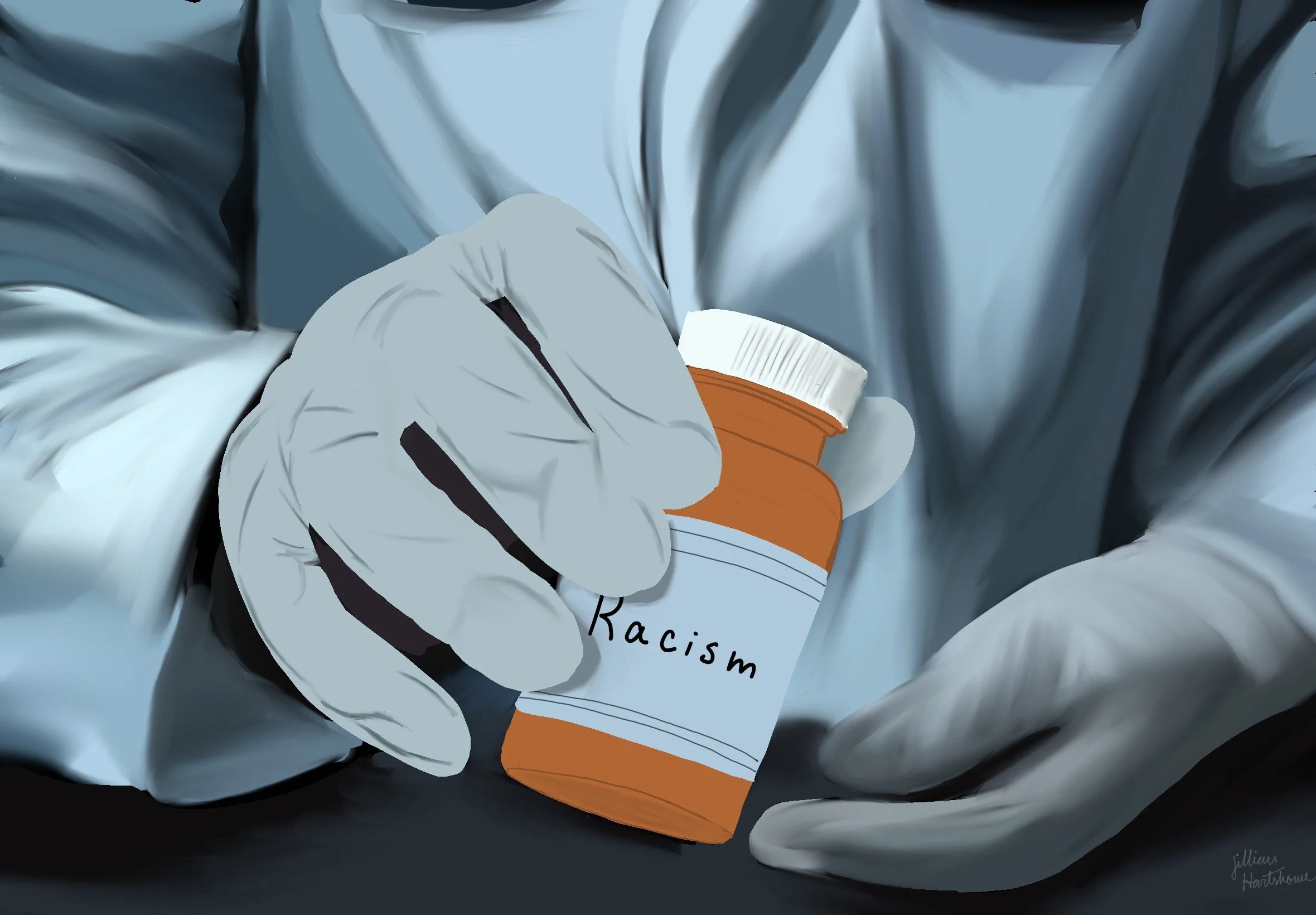Medical Racism
Article By: Orsi Brown / Graphic By: Jillian Hartshorne
To some people, medical racism is not a highly known topic, but its history dates back to the renaissance and continues today. It is not discussed enough. As a Black person planning to go into medical work, the history of people of color and medicine continues to serve as an extremely heartbreaking reminder to me of the disadvantages that people of color face in all aspects of life. Since the 1400’s, Black people have been used for medical research purposes. How?
Of course, the only way for medical innovation requires experiment and research, but the tactics used by doctors were simply disgusting and bereft of safety and sense. In 1655, “theologian” Isaac La Peyrère created polygenism, a theory that classified White and Black people as different species. With this, doctors began to practice on African slaves. Doctors made false claims that continued to fuel their work, claims that Black people have thicker skin, less sensitive nervous systems, and higher pain tolerances. Doctors would perform invasive and harmful clinical trials on slaves with no treatment or anesthesia.
Known as the “father of gynecology”, James Marion Sims is a widely known and hated doctor who performed countless amounts of surgeries on enslaved women and children. Sim’s records describe the operation of 18-year-old Lucy, who “endured an hour-long surgery, screaming and crying out in pain, as nearly a dozen other doctors watched. As Sims later wrote, “Lucy’s agony was extreme.” She became extremely ill due to his controversial use of a sponge to drain urine away from [Lucy’s] bladder, which led her to contract blood poisoning. “I thought she was going to die… It took Lucy two or three months to recover entirely from the effects of the operation”. Sims applied his brutal work to children, too, using “shoemaker’s tools to pry [children’s] bones apart and loosen their skulls.” in order to make them smarter.
More recently and unknown is the Tuskegee Syphilis Experiment. Started in Alabama in 1932, the experiment was on 600 Black men, 399 with syphilis, and a control group of 201. Despite penicillin becoming the treatment for syphilis 15 years into the experiment, the men were not given the medicine for research purposes. Historian Elizabeth Nix writes, “In order to track the disease’s full progression, researchers provided no effective care as the men died, went blind or insane or experienced other severe health problems due to their untreated syphilis”.
It does not help that minorities face economic disparities, further making it hard for them to get health insurance and receiving care in the first place. A May 2024 study shows that the medically uninsured rate for White adults last year was 7%, while the rate for Latinx adults was 18%, 14% for American Indian and Alaska Natives, 12% for Native Hawaiian Pacific Islanders, and 10% for Blacks.
These are only a couple of examples of the maltreatment in medicine that have affected people of color. It is events like these that have led to the high level of racism and use of microaggressions in the medical field today. A 2021-2023 US study of 25 Black hospital patients show that racism is still prevalent in medical work: “Participants reported high levels of race-based medical mistrust and frequent discrimination and microaggressions from health care workers. In describing their experiences with racism, participants cited health care workers silencing or dismissing their experiences and self-knowledge of their illnesses and bodies as the most common manifestation of racism”. The average age of participants for this study was 62, and their life expectancy was of 2 years or less. Our elders should not have to feel unsafe and disrespected in their last years and whilst receiving treatment. It is clear that there is a very real issue of racism within the American medical system that has had significant and high impacts within minority communities. Microaggressions go ignored by officials everyday which continues a cycle of blatant racism which, sadly, has not shown any signs of stopping soon.
There is a long and painful history within medicine that many people do not know about. This history explains so many of the things that happen today and the reasons behind them, which is why it is important that people know about it. I plan to join the medical field and do my part in making a change. I plan to make doctor's office visits a safe place for all people no matter their race, age, or ethnicity, and I hope it is pieces like these that inspire my fellow youth to do the same.
Works Cited:
https://www.history.com/articles/the-infamous-40-year-tuskegee-study
https://www.cbpp.org/charts/inequities-in-uninsured-rates
